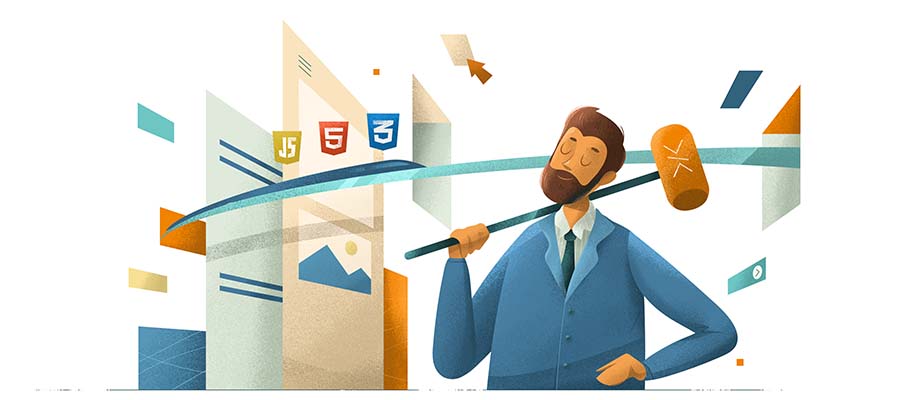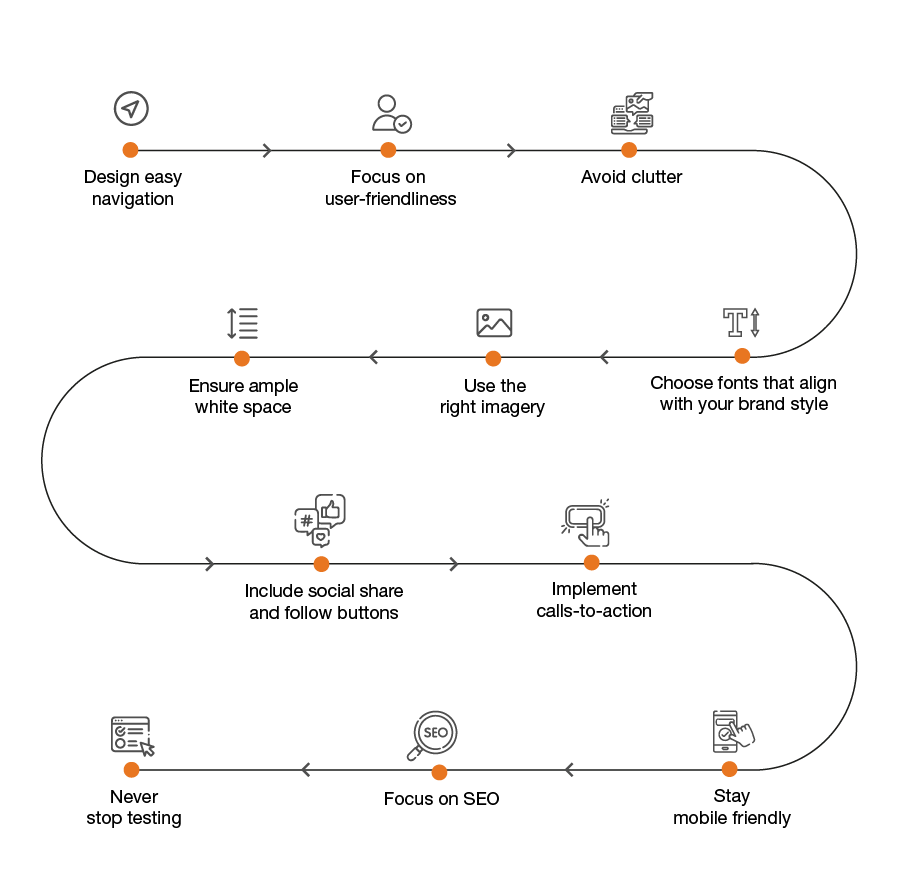How to build a great website?

Building a flawless website that functions smoothly, grabs the attention of the users, and meets their needs is an art. Professional website design and development experts helps to build standard websites.
It’s estimated that there are almost 2 billion live websites around the world – a number which fluctuates daily as many sites are launched or lost. So how do you design and develop a website that stands out and reaches the target audience?
Well-designed websites are much more than just aesthetics. They attract visitors through a variety of elements encompassing visuals, text, interactions, and usability. Each website is different; hence there is no one-size-fits-all approach to successful website designing and development.
However, nothing beats a holistic website creation process which includes different phases such as research, design, content creation, web development, launch and maintenance.
Let’s walk through each phase in detail.
Research and planning
An impactful website development strategy begins with identifying and defining the goals. Research is the key here. The first step to create a new website or to revamp an existing one is to gather all the relevant information regarding objectives of the website and the business, the target audience, and the competitors. Determine if you intend to drive sales, increase business reach, enhance the brand image, or initiate calls-to-action (CTAs). For revamping an existing website, an analysis on its current performance, and strengths and weaknesses is crucial.
Setting clear and well-researched goals lays the groundwork for efficient website planning and development. It helps in preparing a skeleton for the website which includes low fidelity wireframes, and a simple sitemap depicting how the site will look like. The outline will illustrate how the content and functionality will be laid out on a page, considering user needs and journey.
Content creation
Content still reigns as a king. Content creation for websites involves writing for landing pages, product/service descriptions, testimonials, case studies, blog posts, infographics, newsletters and more. Formulating clear and coherent content which sets a tone that supports the brand image and appeal, establishes clear calls-to-action, and fulfils communication objectives is key to successful website design and development. It refers not only to the written text, but also the visual and aural elements.
A well-formulated content will create a balance of text, images, infographics, videos, and other downloadable files.
Including relevant keywords in the content is another crucial factor in website content planning. The popular search phrases in the text will optimize the page for search engine optimization (SEO) and help the website rank high on the search engines. Equally important is the need to structure the content in a lucid and visually appealing manner. Avoid using jargons and slang words.
Design
Website design refers to the overall ‘look and feel’ of the website. Along with the content, it should support the objectives of the site, making it visually appealing to the target audience. A well-designed website with apt colours that complement other visual elements creates a wow-factor that will shape the audience’s initial perception and encourage interaction.
So, how can we analyse if the website will appeal to the target audience? This is where high-fidelity wireframes and UX and UI designs come into play.

High-fidelity wireframes:
High-fidelity wireframes display advanced functional components of the website with actual content, typefaces, colours, image dimensions, and branding elements. They help visualise the end-product, providing a closer look on how the website will work after launch.
UX and UI designs:
The user interface (UI) refers to the aesthetic and visual elements of a website such as typography, colours, menu bars, and more. The user experience (UX) focusses on the experience a user has with the website. The best UX will ensure a clear navigation and ease of use. Interactive and animated mock-ups that depict the UI and UX designs can help evaluate the design appeal of a website.
Development
This is the most technical phase of professional website design and development, where you turn completed creative designs and content into a functional website. Good coding, often developed from scratch by website developers, is the key. The home page is built first, and then the secondary pages are created according to the website’s hierarchy. Configure necessary plug-ins and set up an effective content management system (CMS).
A part of the development phase is population, where you migrate all the content including text, visuals, and attachments into the website. Implement the links and all interactive functionalities.
Testing and launch
Once the website is developed, it is important to test its performance in different platforms and devices. You need to track and correct bugs and ensure successful user testing. The content has to be proofread and every link has to be tested to make sure there are no broken ones. Code validators can help check that your code meets current web standards. Also, ensure that the codes are optimised for SEO, which in turn will improve the site speed. Once the checklist is completed, the website is ready to go live!
Maintenance
Does website development process end with its launch? Certainly not. Website maintenance is an essential aspect that cannot be overlooked. To ensure smooth functioning of the website, it is necessary to build additional layers of security and features. Check for CMS and plugin updates to prevent hacking. Regular backups and bug tracking are also essential so as to mitigate risks of data loss.
Equally important is the evaluation and improvement of your website. Periodical reviews of performance and conversions, as well as making necessary changes and improvements ensure tip-top functioning of the website.
7GMedia is a professional web design agency in Dubai offering various kinds of website design and development services including wordpress and ecommerce.







